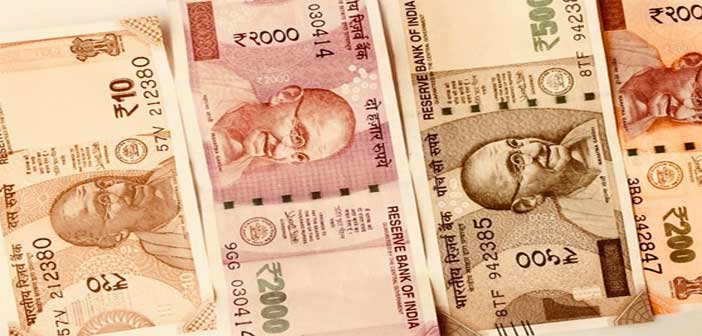Mumbai: India, a country known for its rich cultural heritage and diverse population, also stands out for a unique characteristic – the relatively short lifespan of its currency notes.
Unlike the enduring longevity seen in the currencies of many other nations, Indian banknotes have a notably shorter shelf life. This article delves into the reasons behind this intriguing phenomenon.
Factors Contributing to the Short Lifespan:
1. High Circulation Volume: One primary reason for the shorter lifespan of Indian currency notes is the sheer volume of circulation. With a population exceeding 1.3 billion, the demand for currency notes is exceptionally high. Frequent transactions, coupled with extensive usage, contribute to the wear and tear experienced by Indian banknotes.
2. Climate and Environmental Conditions: India’s diverse climate, ranging from scorching summers to humid monsoons, takes a toll on the durability of currency notes. The varying environmental conditions, including exposure to heat, moisture, and pollution, accelerate the deterioration of the paper and ink used in the production of banknotes.
3. Quality of Paper and Printing: The quality of paper and printing technology used in the production of Indian currency notes plays a crucial role in their longevity. While efforts have been made to enhance security features, the balance between durability and cost-effectiveness remains a challenge.
4. Higher Denominations and Circulation Frequency: Higher denomination notes, such as the 500 and 2,000 rupee bills, often change hands more frequently. These larger denominations are subjected to increased handling, leading to faster wear and tear compared to lower denominations. The frequent circulation of these higher denominations contributes significantly to the overall reduction in the average lifespan of Indian currency.
5. Consumer Habits: Cultural practices, such as folding and crumpling currency notes, are prevalent in India. While these actions may be unintentional, they contribute to the physical stress experienced by the notes. Additionally, a lack of awareness regarding proper handling practices accelerates the degradation of the currency.
Also Read : Exploring India Post Financial Services : Unveiling the Pros and Cons
Impact on the Economy:
The shorter lifespan of Indian currency notes has both economic and environmental implications. The need for frequent printing and circulation places an additional burden on the country’s minting facilities, requiring constant updates to meet the demand. This process incurs substantial costs for the government.
Furthermore, the disposal of old and damaged notes poses environmental challenges. Sustainable and eco-friendly measures for currency disposal and production are essential to address the environmental impact associated with the short lifespan of Indian currency.
Subscribe our Youtube Channel : https://www.youtube.com/@forevernews6213
While the short lifespan of Indian currency notes is a multifaceted issue influenced by various factors, it remains an inherent aspect of the nation’s economic landscape. Striking a balance between durability, security, and cost-effectiveness is a perpetual challenge for policymakers. As India continues to evolve, finding innovative solutions to enhance the longevity of its currency notes will be crucial in ensuring a more sustainable and resilient financial system.
G. Subramanian






